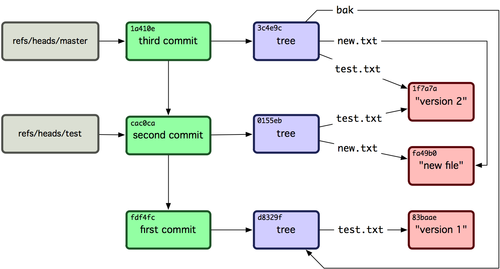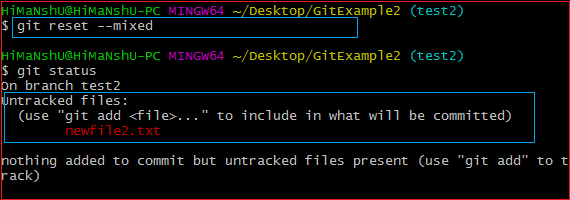

To do so it is necessary to undo three commits, so for that a suitable command is the following:Īgora vamos supor que eu quero voltar ao estado do commit d815be que é o commit inicial que adicionou o arquivo README.md. The command modifies the index (the so-called staging area). Now let’s suppose I want to go back to the state of commit d815be which is the initial commit that added the README.md file.

Let’s take another look at our history, which now contains only four commits (since I already undid one): This clears the buffer zone from the changes that we have just staged. To do so, just add the number of commits you want to undo after ~. The reset command resets the buffer zone to HEAD. Git HEAD - Git HEAD reset and Git HEAD overwrite - what to do - Blog GitProtect.io Git Backup 101 DecemGit HEAD Git HEAD reset and Git HEAD overwrite what to do By Tomasz Lisowski There is a great variety of DevOps tools that serve different purposes and uses. After that you'll find a nice little a bonus, so stay tuned. I will start with the first three, since these are the modes you'll usually encounter.
Git reset to head how to#
Now that you know how to undo a commit, you can use the first command you’ve just seen and adapt it to undo more commits. 5 Answers Sorted by: 299 git reset does know five 'modes': soft, mixed, hard, merge and keep. You can now discard the changes or keep up with them and make a new commit. HEAD is a pointer to the latest commit in our current branch. When you run git status nothing should be any directories above you. git reset suggests that we are resetting commit(s). / then do git reset -hard and/or git clean -fd to reset everything. And if you check the history again you will see that the commit 48ccb8 no longer appears. 1 I noticed that you need have all the unstaged files in your path, not some directories above like. Suppose you have a history like the one in the following image, in which the last commit ( 48ccb8) adds the file called arquivo-4.txt:Īnd if you run any of the commands above, followed by a git status, you will see a result like this:Īnd you can see that arquivo-4.txt has returned to its previous state, which was waiting to be committed. Note that when executing these commands, you will not see a message stating that the commit was undone, but if you run the command git status after executing any of these three commands you will see that files added and/or changes made went back to being marked as changes to be committed (added to a commit). Doing a hard reset git reset -hard HEAD3 Go back in time, throwing away changes git reset -soft HEAD3 Set HEAD to point to an earlier commit git. The obvious case is when you make some changes, commit them, then later decide you don’t want them anymore.Go back to the state before the last commit. But the state of your file will determine what changes you’re actually undoing.

Run this command: git reset -soft HEAD Your.
Git reset to head windows#
You may think of resetting a file as undoing changes. In your terminal (Terminal, Git Bash, or Windows Command Prompt), navigate to the folder for your Git repo. A file can have different contents in each of these locations. When you’re in the process of gathering changes, you stage files. Files that you commit ultimately end up in the repository. The files you edit locally belong to the working tree. The following terms are key to understanding the difference: working tree, staging area, and repository. It is the most direct, unsafe, and frequently used option.
Git reset to head update#
On other occasions, you might want to roll back changes that you've already committed to the repository. It will first move the Head and update the index with the contents of the commits. Sometimes, you’ll want to undo local changes so a file is back in sync with the current repository. Also, the git reset command might not match your expectations for what resetting means.

How can I move HEAD back to the previous location I have the SHA-1 fragment ( 23b6772) of the commit that I need to move it to. It’s important to note that resetting a file might mean different things to different people under different circumstances. 307 In Git, I was trying to do a squash commit by merging in another branch and then resetting HEAD to the previous place via: git reset origin/master But I need to step out of this.


 0 kommentar(er)
0 kommentar(er)
